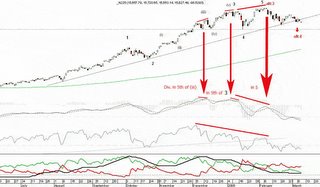Its Price, Price, Price, but the Interest Rate scenario is tied very closely to investors' purse strings -- that's the reason I pay attention to monetary policy in Japan.
Another compelling reason is that the Yen dances to nobody's tune. It is one heck of a loner; ninjas, yakuzas, Mafia, gurus and everybody worth anything has tried to come up with some sort of correlation that would provide clues to how the Yen works. So far, zilch; a dead end.
With the dollar, you could look into bond yields, Libor differentials, Forward Rates, Fed funds Rate etc., to get some idea of what is going on. With CAD you look at the Toronto Stock Exchange for clues along with fund inflows and the CRB component of the Stock Exchange etc.--
But with the Yen, there's not a single thing that comes even close to giving a halfways decent clue.
What all players want to know now is this:
"Will the end of Quantitative Easing be followed quickly by the ending of the zero interest rate policy?That's the ticket, guys.Japan has flooded the universe with liquidity, & has been a main source of capital and savings for the world. Now that looks like it is going to change.
I have an answer to the dilemma and therfore one more key point in my ongoing decision whether to buy (long) USDJPY or not!The Quantitative Easing policy did not begin in earnest until 2003, four years after interest rates were reduced to below 10bp in 1999 and two years after they fell to absolute zero in mid-2001. Thus a gradual reduction in bank reserves from the present ¥35 trillion to ¥15 trillion (where they were in 2001) or even ¥5 trillion where they were in 1999 would be perfectly compatible with zero or near-zero interest rates.
It is highly likely that BOJ will reduce liquidity while maintaining a zero Interest Rate policy for this decade.
There is a good reason for sticking with the zero interest rate policy.
Japan has a huge government deficit and a very high level of public debt relative to GDP. Thus when the economy gets strong enough to withstand a deflationary impact, the Japanese will want to hit it with fiscal rather than monetary tightening. Tax increases are already in preparation for 2007 or 2008 and to make sure that they can be implemented without causing a 1997-style economic disaster, Bank of Japan and Ministry of Finance officials
have agreed that monetary policy should remain ultra-loose for the foreseeable future. All the discussion about ending Quantitative Easing seems to have persuaded many investors that the zero rate policy is also about to be abandoned. The Japanese yield curve is now discounting a very aggressive increase in interest rates, with short rates expected to rise by 75 bps this year and 150 bps by the end of 2007.
I am stating that Interest Rates will remain under 50 basis points or so for the next few years.
I'm satisfied with my fundamental analysis of the situation and furthermore, one more point in its favor is that now the herd is going strongly towards rising Japan Interest Rates. I certainly don't want to go with them. The opposite is the more likely scenario, namely, rates will stay close to zero!


